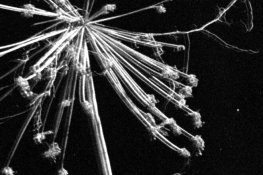bernard_L
Member
- Joined
- Feb 17, 2008
- Messages
- 1,954
- Format
- Multi Format
Made the first test of my second Contaflex (Super) body, bought last June. Some images show a ghost image, offset from the main image by a small amount. Most noticeable on pictures taken with the 85mm pro-tessar. Some pics with the same 85mm (and same body) do not show that problem. Still unsure whether the problem might be present with pics taken with other lenses (50mm Tessar, 35mm pro-tessar). See attached pics: full frame, and two details @2700dpi (yes, I know; but how can I communicate my problem??)



The secondary image appears to be offset along a direction between 2 o'clock and 3 o'clock; the twigs along that direction appear as single. Nothing is rattling inside the Pro-Tessar 85mm (Zeiss construction). The only (tentative, incomplete) explanation I can come up with is some mechanical jolt occurring in the middle of the exposure. The problem might be made more visible by, but not caused by, the longer FL of teh 85mm. Mirror slap? Is that a Known Issue (as they used to call bugs at Microsoft)? Thank you in advance for insights.



The secondary image appears to be offset along a direction between 2 o'clock and 3 o'clock; the twigs along that direction appear as single. Nothing is rattling inside the Pro-Tessar 85mm (Zeiss construction). The only (tentative, incomplete) explanation I can come up with is some mechanical jolt occurring in the middle of the exposure. The problem might be made more visible by, but not caused by, the longer FL of teh 85mm. Mirror slap? Is that a Known Issue (as they used to call bugs at Microsoft)? Thank you in advance for insights.













